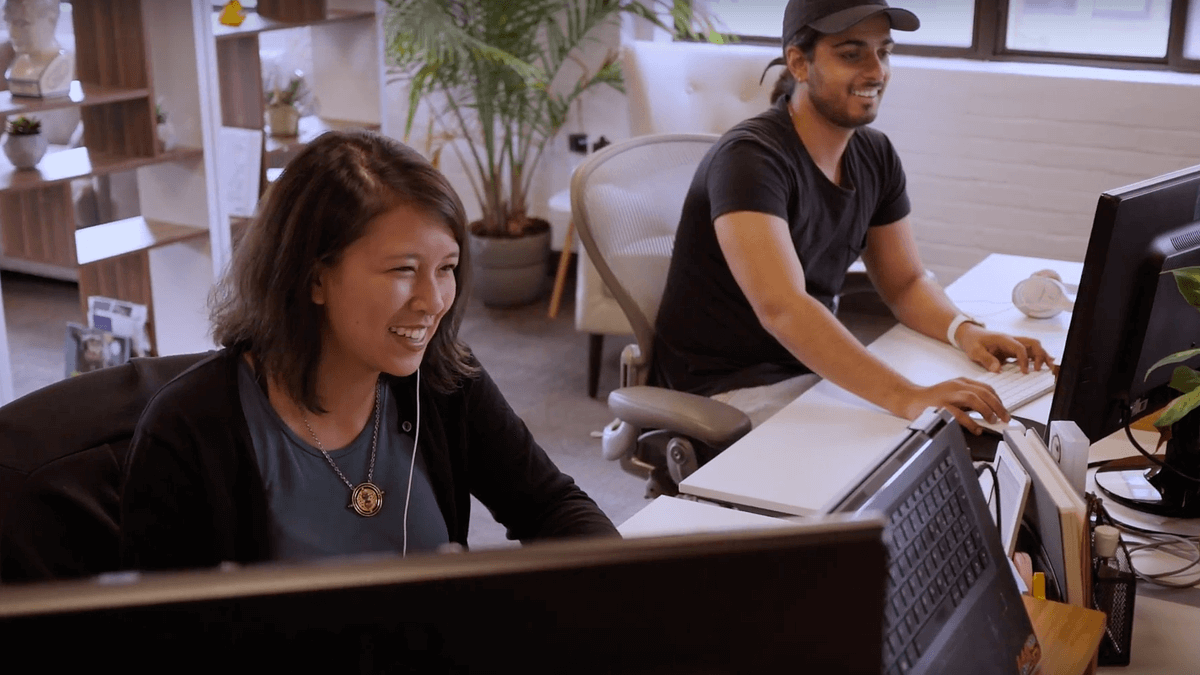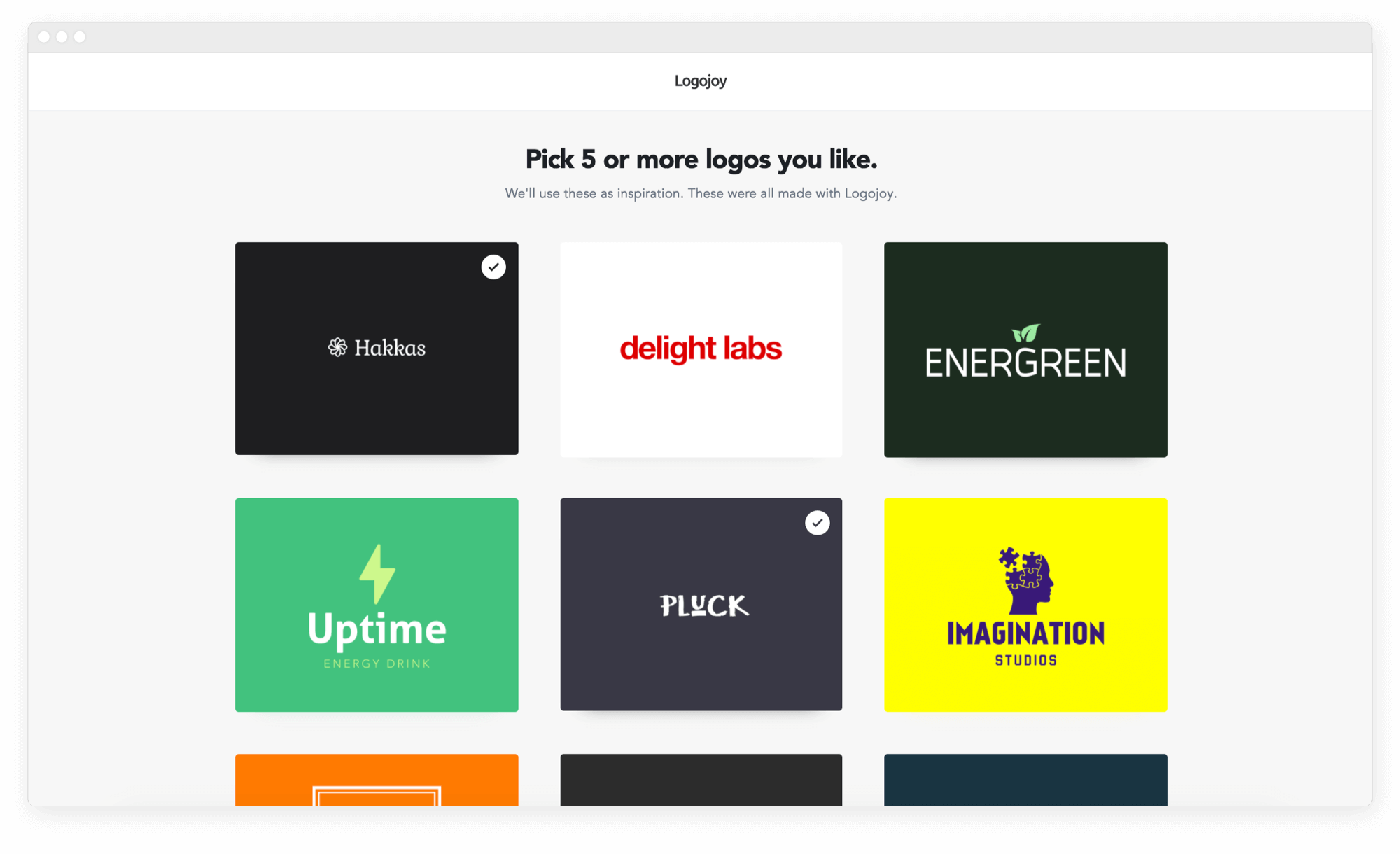How much does a logo cost?
Online logo maker Looka opened up their design process to machines. But their humans had to figure out the pricing model.<br>

Looka (formerly Logojoy) uses artificial intelligence to make logo design accessible and fun for new businesses. With more than 20,000 logos sold in its first year, a big part of the company’s growth comes from its pricing model—which was not easy to come by.
When Paul Rand designed the famous NeXT logo for Steve Jobs, his upfront message was clear:
In case you don’t know the story, Rand was talking about his $100k fee with a take it or leave it policy.
But think about it: you shouldn’t have to pay for a logo until you’re happy with it. And when you work with a designer, that’s not possible. You have to give money up front for the time it takes to cook up the design, rather than the finished logo itself.
We solve this problem with machine learning. It gives people a way to find inspiration, generate logo mockups, save favorites, and review their options until they land on a design they want.
Don’t get us wrong, we still have human designers. Just look at these happy Looka makers:
And the most important part? We let people make as many logos as they want for free—they only purchase the files when they want to download and use a design.
This removes a huge barrier: people can see the final product before they buy it.
But when you’re selling design, so much of it is about perceived value. Good design is so intangible, so subjective, that it’s almost impossible to determine what a logo should cost.
So while our “design before you buy” model is a huge driver of growth, it does present a few challenges.
Challenge #1: All design, no buy
When people can design as many logos as they want for free, it’s difficult to keep a sense of urgency that gets them to the purchase stage. So we work hard to get people excited about finishing their logo and building a brand.
How? By showing users exactly what they stand to gain.
As people create their logos, we show live previews of how it will look on business cards, T-shirts, signage, and more. This adds context so people can get a “feel” for their logo, which encourages them to commit instead of leaving designs sitting in their accounts.
We also motivate people by offering them lots of versions of their logo. So when someone buys our premium package, they get different file types, sizes, and color variations—plus a set of brand guidelines they can use as their business grows.
Challenge #2: Keeping two types of customers happy
When it comes to pricing, we have two main types of customers in mind:
- People who are working on a side hustle. They’re price-conscious and don’t want to invest a lot of money or time.
- People who are making a logo for their full-time business. They’re willing to spend more and would pay to work with a designer, but they’d rather do it themselves.
Catering to different expectations is key—so we decided to tweak our menu by offering package add-ons. Here’s an example:
We used to include a social media kit as part of the premium package, which gave the user different versions of their logo for all the major social media platforms.
But we realised that not all users needed this, so we decided to offer it as a $9 add-on. The result? A delicious $30,000 extra per month in revenue.
Our latest add-on is for business card designs—it’s a natural next step after getting a logo, and we saw an appetite for it in customer surveys. And since the social media add-on worked so well, we thought: why not try that again?
We’re able to experiment like this because our pricing model is flexible.
But there’s a catch—these add-ons add an extra step to the checkout flow. So we have to make sure we’re not decreasing our conversion rate by offering à la carte options. It’s something we’re always tracking and tweaking.
Challenge #3: Letting people change their order
Even a “design before you buy” model doesn’t prevent buyer’s remorse.
In fact, the demand for being able to change your logo after you bought it was so high—more than half our inbound calls and emails—that we decided to test an in-app solution.
It works like this: premium customers can make changes to their logo for up to 72 hours after purchase, as long as it’s for the same company name. And once that window is closed, customers can still contact our Customer Success team to get credit added to their account to revise and re-download their logo.
When we advertised the ability to make post-purchase changes, we saw a jump in conversions by almost 15%. It’s like a return policy—once people know it’s there, the fear of commitment is removed.
Our “design before you buy” model has been in place since we launched in 2016, and we’ve learned a lot about how to use it to drive more growth.
By creating excitement during the logo-making process, offering add-ons that help different users get what they want, and allowing customers to make changes after purchase, we’ve been able to increase our conversions—and joyful customers.





